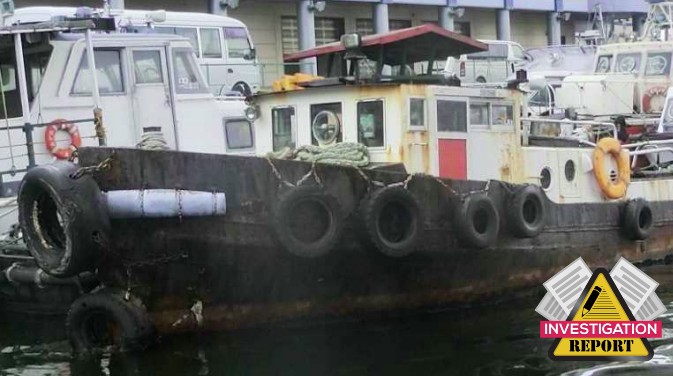JTSB issued an investigation report on the collision of a Ro-Ro cargo ship with a tugboat off Keihin Port, in June 2019. The investigation highlighted issues related to poor visibility due to dark and heavy rain.
The incident
The Ro-Ro cargo ship PANSTAR GENIE, with master and 16 other crew members onboard, left the Shinagawa Wharf, Tokyo Section 2, Keihin Port, proceeding southeast to Nagoya Port, Aichi Prefecture.
Meanwhile, the tugboat DAITOUMARU, with a captain alone, was proceeding southeast toward Daikoku Wharf, Yokohama Section, Keihin Port, after departing from Shibaura Landing Stage, Tokyo Section 2, Keihin Port.
[smlsubform prepend=”GET THE SAFETY4SEA IN YOUR INBOX!” showname=false emailtxt=”” emailholder=”Enter your email address” showsubmit=true submittxt=”Submit” jsthanks=false thankyou=”Thank you for subscribing to our mailing list”]
At around 19:25 on June 10, 2019, the two vessels collided in the vicinity of the northern end of the Tokyo West Passage, Tokyo Section 3, Keihin Port.
As a result, PANSTAR GENIE suffered abrasions on its port and starboard bow’s shell plating and DAITOUMARU suffered fractures and other damages on its mast. There were no casualties on either vessel.
Probable causes
- It is probable that the accident occurred when PANSTAR GENIE and DAITOUMARU were both proceeding southeast. PANSTAR GENIE approached from the stern, gradually sped up, and continued to navigate parallel without noticing DAITOUMARU navigating near its bow at twilight after sunset in Tokyo Section 3, under the condition whereby it became dark and difficult to see in the surroundings due to heavy rain.
- Probably the vessels collided because DAITOUMARU also continued navigating at a constant speed without noticing that PANSTAR GENIE was proceeding southeast after it departed.
- It is also probable that PANSTAR GENIE continued navigation without noticing DAITOUMARU because the surroundings were dark and the visibility was poor due to heavy rain.
- On top of that, DAITOUMARU was a small vessel approaching PANSTAR GENIE from its stern, and after it navigated within the minimum detection distance of PANSTAR GENIE’s radar, it navigated inside the blind spot from PANSTAR GENIE’s wheelhouse.
- The fact that PANSTAR GENIE dismissed its crew members from departure stations and began proceeding southeast under poor visibility due to heavy rain might have contributed to PANSTAR GENIE not being able to notice DAITOUMARU.
It is probable that the reason why Master B did not monitor PANSTAR GENIE’s movements and continued with the navigation was, from the first time he noticed PANSTAR GENIE, he assumed that it was an incoming vessel mooring at the Shinagawa Wharf.
In addition, it is probable that the noise from DAITOUMARU’s main engine and the sound of rainfall at the time of the accident might have caused Master B not to notice that PANSTAR GENIE was approaching.
Recommendations
Therefore, it is necessary to implement the following measures to prevent the recurrence of similar accidents.
- Masters of large vessels should remind themselves that radars cannot detect vessels that are within the minimum detection distance and reinforce the visibility lookout but crew members stationed on the deck in order to watch for small vessels approaching suddenly, especially when proceeding astern and at a low speed as they enter or leave the port. Furthermore, the crew members should be dismissed from their respective departure stations at an appropriate time after confirming the safety of the surroundings.
- Masters of large vessels should conduct a lookout not only from inside the wheelhouse but also from the wing to check the presence of vessels navigating within the radar’s minimum detection distance and inside the blind spot of the wheelhouse.
- Before departure, masters of miscellaneous vessels should obtain information on the movements of vessels entering and leaving port, conduct sufficient lookout of the surroundings, and navigate at a distance sufficient enough not to interfere with the navigation of large vessels.





























































